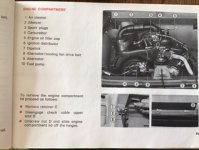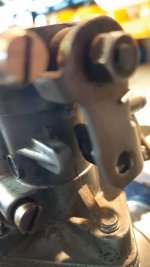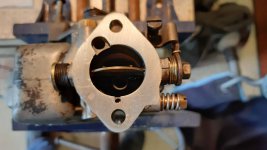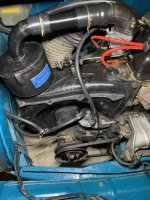1st, I'd try advancing the ignition timing a little and then test-drive.
If no difference, reset the ignition timing to stock and
2nd, I'd do a quick check on fuel pump output.
If following the following procedure, best do it outdoors and have a fire extinguisher to hand.
1. Warm up the engine so that it will idle normally without choke.
2. Switch off.
3. Disconnect the fuel pipe at the carb, place the open end into a container outside of the engine compartment
4. Start engine and allow to idle.
5. If fuel pump is ok, you should collect approx. 1 pint (1/2 Qt, 500cc/ml) in 1 minute of engine idling. If float level is ok, engine should be able to idle for 1 min when warmed up, i.e. not running on choke.
If you have a fuel pressure gauge, iirc, you need a minimum of 2.5 psi but not more than 4 psi. - higher pressure can cause carb flooding.
Fuel pumps occasionally give trouble on the 500. The pump internal spring can go weak, the diaphragm can leak or the little disc valves can leak. The only possible adjustment in to the stroke of the pump pushrod (it's usually ok). Also fuel flow can be restricted due to blocked filters - there's usually 3 filter screens, 1 on the fuel pick-up pipe in the tank, 1 inside the fuel pump and 1 adjacent to the carb fuel connection under a large brass nut (iirc 19mm/3/4" size). These 3 filters rarely give trouble unless the car has been laid-up for a long time. If the fuel pump output is low, best to check these filter screens are clean before replacing the fuel pump.
Al.









